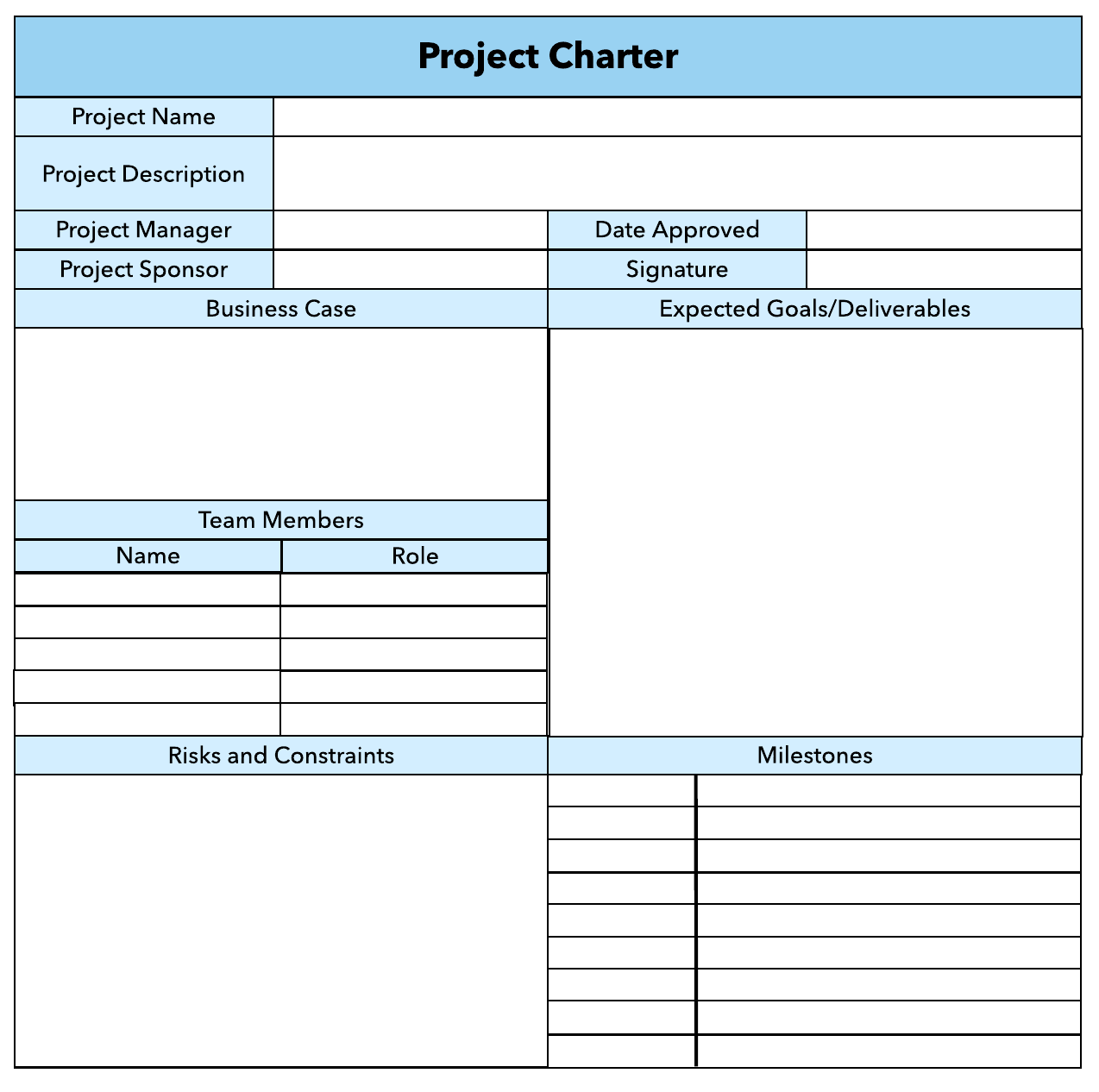October 21, 2024
 by Grace Pinegar / October 21, 2024
by Grace Pinegar / October 21, 2024

You know the cycles of the moon and the cycle your emotions go through when watching re-runs of Grey's Anatomy. But what about the intricate cycle that governs successful projects?
Understanding the project life cycle is essential for every project manager, as it lays the foundation for effectively transforming an idea into a successful outcome.
A project life cycle includes the five phases a project manager follows to take a project from inception to completion. It is the framework by which project managers measure their progress. The five stages are ideation, planning, execution, control, and closure.
Project managers often rely on project management tools to effectively plan, execute, and monitor the complexities of the project life cycle.
Embracing the project life cycle in conjunction with effective tools not only improves project outcomes but also fosters a culture of continuous improvement within teams.
Before we begin, let’s answer the question: what is a project life cycle?
The project life cycle is the four or five effective project management phases that take a project from inception to completion. It is the framework by which project managers measure their progress.
The five possible components of the project life cycle are initiation, planning, execution, control, and closure. Those who recognize the project life cycle as a four-step process have typically combined the execution and control stages into one.
Let’s discuss the steps one by one.
The initiation stage of the project life cycle can also be referred to as the ideation or conceptualization stage. They all mean the same thing.
In this stage, management or other authority figures have determined a business need that will require the work of a project manager. The project itself could improve business processes, create revenue, or otherwise fill a need in the organization.
During the initiation stage, the project manager (PM) determines and clarifies the project’s objective and develops the project charter.
Tip: As a project manager, it's important to know the difference between goals and objectives. Learn more here!
A project charter is a statement of the scope, objectives, and participants involved in or necessary to the completion of a project. You could also call this a statement of work (SOW).
 Image courtesy of LucidChart
Image courtesy of LucidChart
Some project managers use this phase to draft any contracts necessary to complete the project. Additionally, it's common to conduct a feasibility study during this time to help determine the likelihood of success before potentially wasting valuable resources in the next phase.
In the planning stage, a project manager creates a map for the course their team is soon to follow. The PM’s job is to formalize the steps their team will take to accomplish the overall end goals.
During the planning stage, a PM will answer questions such as:
Planning requires a deep understanding of what is needed to accomplish your goals. In the planning stage, a PM would determine what resources are needed and develop a budget.
Ready to put a plan in place? Check out our comprehensive guide on project planning now.
After the planning stage is complete, it’s time to begin the work. Hence, the execution stage, or the stage where a project is carried out. A PM has assigned tasks to their team, and during this stage, the team gets to work.
However, a PM's job is not done here. They are responsible for ensuring that all parts of the machine run smoothly continuously.
If the project consists of developing 40 tires per month in a factory, for example, a PM would check the weekly, daily, and hourly tire production to ensure their employees are performing on pace.
Some PMs prefer to split up execution and monitoring into two stages: execution and control.
The control stage, should you choose to think of it separately from execution, runs parallel to execution. It is the process of consistently monitoring progress during execution to ensure your team is performing as they should.
As a PM, you’ve created a timeline for the project as a whole. During the control stage, you monitor your team’s milestones and accomplishments to determine if that timeline is accurate.
If your predictions turn out to be wrong, closely monitoring progress should give you time to correct them.
If you think of a relationship, we often don’t find closure until months after a breakup. Project closure, also referred to as termination, is the final stage of the project life cycle, and it begins after a project has been completed.
During the closure stage, a PM is responsible for disbanding the team assembled for the project and returning any resources back to their owners. If applicable, team members are assigned new responsibilities or begin their next project.
It’s important for a PM to use the closure stage to wrap up any loose ends and reflect on and record how the project went. Did the team ultimately meet their goals? If not, how could they do better?
Have you begun a project closure report? Senior management uses this type of document to determine whether a project was ultimately successful. It will contain reflections from the project that might improve future practices and officially end the project.

Image and document courtesy of CITool Kit
Have you scheduled a project post-mortem? Also called a project retrospective, this process helps PMs and stakeholders evaluate whether a project succeeded or failed to meet the business goals that were originally established.
These are all important tasks to accomplish in the closure stage.
An effective project life cycle brings numerous benefits to organizations and project teams, contributing to the successful delivery of projects.
The project life cycle provides a clear framework for managing projects, breaking them down into distinct phases. This structure allows teams to understand what is expected at each stage, facilitating better planning, execution, and monitoring.
By following a defined life cycle, project managers can develop comprehensive plans that identify necessary resources, timelines, and budgets. This foresight helps ensure that resources are allocated efficiently and that potential bottlenecks are anticipated and addressed proactively.
A well-defined project life cycle incorporates risk assessment and management strategies throughout its phases. By identifying risks early in the process, teams can develop mitigation plans, reducing the likelihood of unforeseen challenges derailing the project.
An effective project life cycle emphasizes communication and collaboration with stakeholders at every phase. Engaging stakeholders regularly fosters transparency and ensures that their expectations are understood and met, leading to greater satisfaction with the project outcomes.
The structured nature of the project life cycle enables teams to implement quality assurance processes at each stage. By establishing quality criteria and conducting regular reviews, teams can identify and address issues early, resulting in a higher-quality final product.
A well-implemented project life cycle ensures that projects align with the strategic objectives of the organization. By prioritizing projects that support broader goals, organizations can achieve better outcomes and maximize the value of their investments.
While the project life cycle offers numerous benefits, it also presents various challenges that project managers and teams must navigate. Here are some key challenges associated with managing the project life cycle:
The structured nature of the project life cycle can introduce complexity, especially for larger projects with multiple interdependent phases. Managing this complexity requires careful planning and coordination, which can be resource-intensive.
Changes in project scope, requirements, or organizational priorities can be met with resistance from team members and stakeholders. This resistance can hinder the project's progress and make it difficult to implement necessary adjustments throughout the life cycle.
Effective communication is critical at every phase of the project life cycle. However, miscommunication or lack of information sharing among team members and stakeholders can lead to misunderstandings, delays, and missed opportunities for collaboration.
Projects often face limitations in terms of time, budget, and personnel. These constraints can make it challenging to adhere to the planned life cycle, leading to compromises in quality, scope, or timelines.
Balancing the diverse and sometimes conflicting expectations of stakeholders can be difficult. If stakeholder needs are not accurately captured and managed throughout the project life cycle, it can result in dissatisfaction and hinder project success.
Scope creep occurs when the project's requirements expand beyond the original scope without proper approval or adjustment to timelines and resources. This challenge can disrupt the project life cycle, leading to delays and increased costs.
These are the leading project management software as per G2's Fall 2024 Grid® Report.
The project life cycle can be reused and recycled month after month and year after year as PMs aim to improve businesses continually. This strategy is trusted by many and has led to the success of countless projects.
Explore our collection of project management guides and resources today, and start your journey toward more effective project planning!
This article was originally published in 2019. It has been updated with new information.
Grace Pinegar is a lifelong storyteller with an extensive background in various forms such as acting, journalism, improv, research, and content marketing. She was raised in Texas, educated in Missouri, worked in Chicago, and is now a proud New Yorker. (she/her/hers)
Agile is a collaborative project management approach that uses values and principles from the...
 by Sudipto Paul
by Sudipto Paul
A project manager has to wear multiple hats while juggling time, cost, and quality to keep...
 by Grace Pinegar
by Grace Pinegar
If you’re not succeeding at a challenge, you might try to change your approach.
 by Grace Pinegar
by Grace Pinegar
Agile is a collaborative project management approach that uses values and principles from the...
 by Sudipto Paul
by Sudipto Paul
A project manager has to wear multiple hats while juggling time, cost, and quality to keep...
 by Grace Pinegar
by Grace Pinegar


